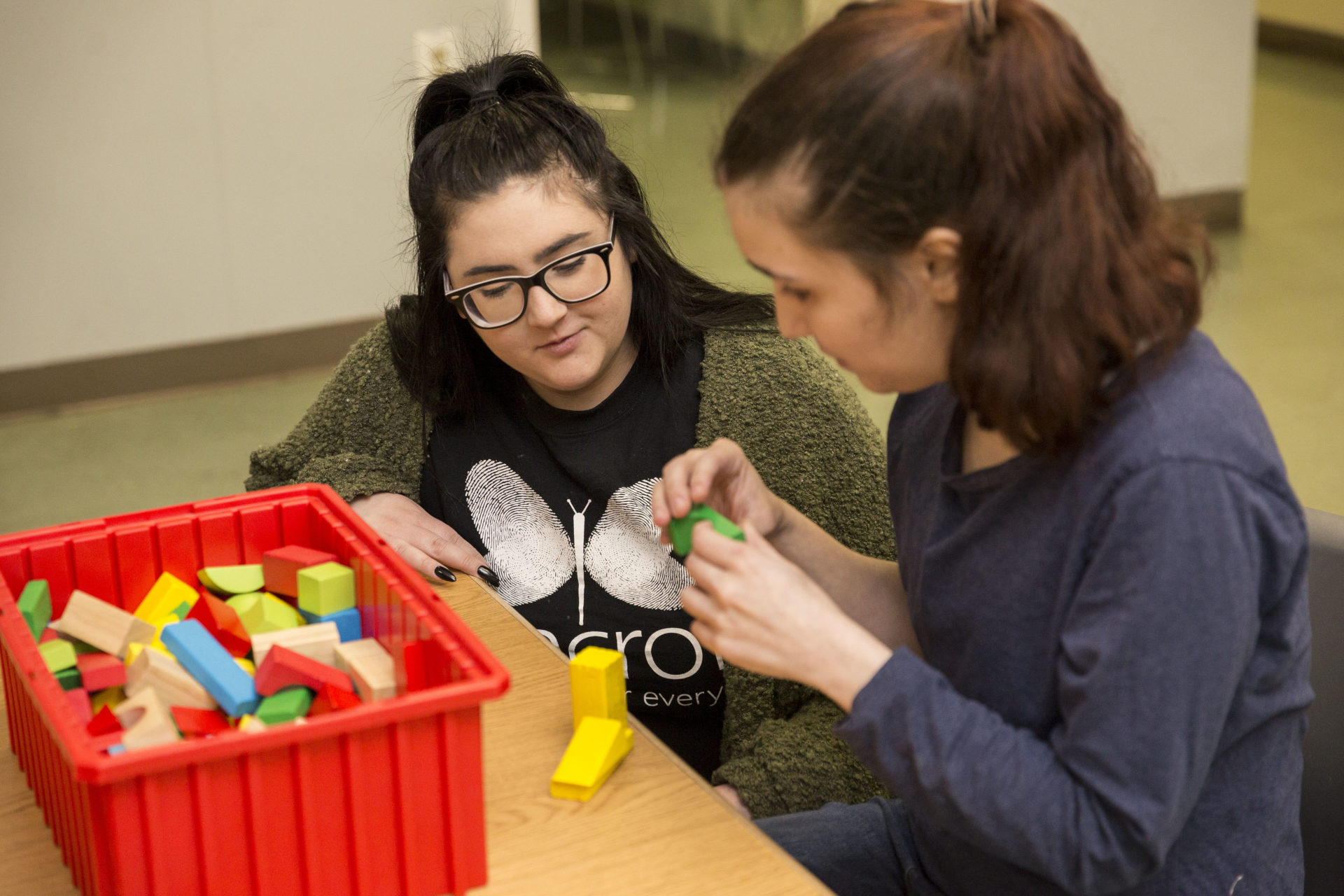Many parents know the struggle that can come with getting their kids to bundle up in the colder months. The Principal of Bancroft’s Preschool & Early Education Program shares strategies to help minimize challenges and preserve parents’ peace of mind.
By Lisa A. Scaringelli, Ed. S., M.Ed
Principal, Preschool & Early Education Program
Years ago, I came across a “Game of Thrones” meme that has stuck with me ever since: “Brace Yourself. Winter is Coming.”
For everyone else, it was a simple meme centered around a theme of the show. For me, it was a call-out to the struggle I see parents and caregivers of children with autism and other intellectual disabilities face every winter trying to get them to wear heavier winter clothes.

As winter approaches, I always think of that meme and remember my own experiences, both working with students with special needs and as a mother. We all know the struggle, whether it’s with the teenage boy who prefers to wear shorts and a hoodie, even in the most bitter cold; the kid who hates knit hats; or a child with more severe sensory sensitivities who might melt down over wearing bulky coats, long pants, or heavier socks and shoes. Children might be averse to a piece of clothing for any number of reasons. But the truth is that we all just want to be comfortable. At the same time, as parents, we have a responsibility to make sure our children are safe, which includes being dressed weather-appropriately. How do we strike that balance?
As the temperatures start to dip, here are 4 tips for seasonal sensory challenges, to preserve both their warmth and your peace of mind:
1. Give them a choice.
For many children, simply presenting options might do the trick. A few you might consider:
- Shoes: If big, heavy sneakers or boots are uncomfortable, look for lightweight sneakers, slip-on shoes or even a pair of fleece-lined moccasins.
- Mittens may be easier to put on than finger gloves, or your child may prefer a fleece glove to a knit material. Try a few options, and see if something sticks!
- Earmuffs, knit caps and ear warmers are all great choices – although some kids may prefer the pressure of a knit cap. (This is also the best option for warmth, as heat escapes from the top of the head.)
2. Seek sensory-friendly options.
Your child might be bothered by tags, seams, zippers, a certain type of material; the possibilities are endless. Fortunately, many stores and online retailers offer affordable and easy-to-find, sensory-friendly clothing. A quick Amazon or Google search will yield a variety of options for tagless clothes, seamless socks and compression clothing.
In my experience, compression clothes, especially – pants, socks and even undershirts – can go a long way toward making children more comfortable. Additionally, Target has a clothing line called Cat and Jack that includes adaptive sensory-friendly clothing options for children. Winter coats have come a long way, too, with newer technology that provides plenty of warmth while being thin and lightweight.
3. Consider safety – but pick your battles.
Sometimes, it’s OK to decide that a battle just isn’t worth it. Safety should be paramount, so consider the temperature, the conditions outside, and how long your child might be exposed to the elements.
If your child has trouble processing or understanding how cold they are, you might think it’s more important to make sure they’re bundled up and warm. But if they’ll be inside for most of the day, you might be willing to concede something lighter.
If the ground outside is dry – and, again, if they’ll be indoors most of the day – you might decide you’re OK letting them wear Crocs and socks instead of bulky sneakers or boots.
4. Establish a routine.
Establish a routine for preparing to go outside in the winter. First, model putting on or wearing your own socks, shoes, boots, coat, hat and gloves. Now turn to your child and say, “Your turn!” Let them select from a basket you keep ready near your door of hats, gloves, and coats. Review their choices with them. You may need to hold up the two specific options they can choose from if they are overwhelmed.
Once they choose, praise them for making a good choice and move to the next item. When they are all ready to go outside, praise them again for a job well done! Having consistent expectations and an organized area will help make this a smoother transition to cold weather gear.
If you feel you need additional support, or can’t address your concerns alone, talk to your child’s medical provider or the child study team at school; they can refer you for specialized services. An occupational therapist can provide a sensory assessment, identify modifications you may be able to make, and help to develop a program to address their particular sensitivities.
So much of parenthood is just trying to do the best you can in a given situation. You know your child, and you’ll always have their best interests at heart so above all, trust your gut.
















